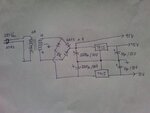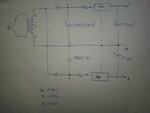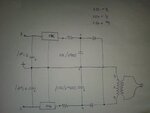sinCERA
Junior Member level 1
- Joined
- Feb 25, 2013
- Messages
- 15
- Helped
- 0
- Reputation
- 2
- Reaction score
- 1
- Trophy points
- 1,283
- Location
- Philippines
- Activity points
- 1,375
Hi sirs,
We're making power supply for our ampli and equalizer project. And I've decided to use only one transformer (IN:220Vac; OUT:16Vac center-tapped/6 Amperes), 6A05 bridge rect., and LM7815 and LM7915. My amplifier requires 45Vdc/6A and the equalizer needs ±15Vdc/1A (for the ICs).
Btw, here's my design and I don't know if the component values or the design itself is correct.

Please help me guys. Thanks in advance.
We're making power supply for our ampli and equalizer project. And I've decided to use only one transformer (IN:220Vac; OUT:16Vac center-tapped/6 Amperes), 6A05 bridge rect., and LM7815 and LM7915. My amplifier requires 45Vdc/6A and the equalizer needs ±15Vdc/1A (for the ICs).
Btw, here's my design and I don't know if the component values or the design itself is correct.

Please help me guys. Thanks in advance.
Last edited:

